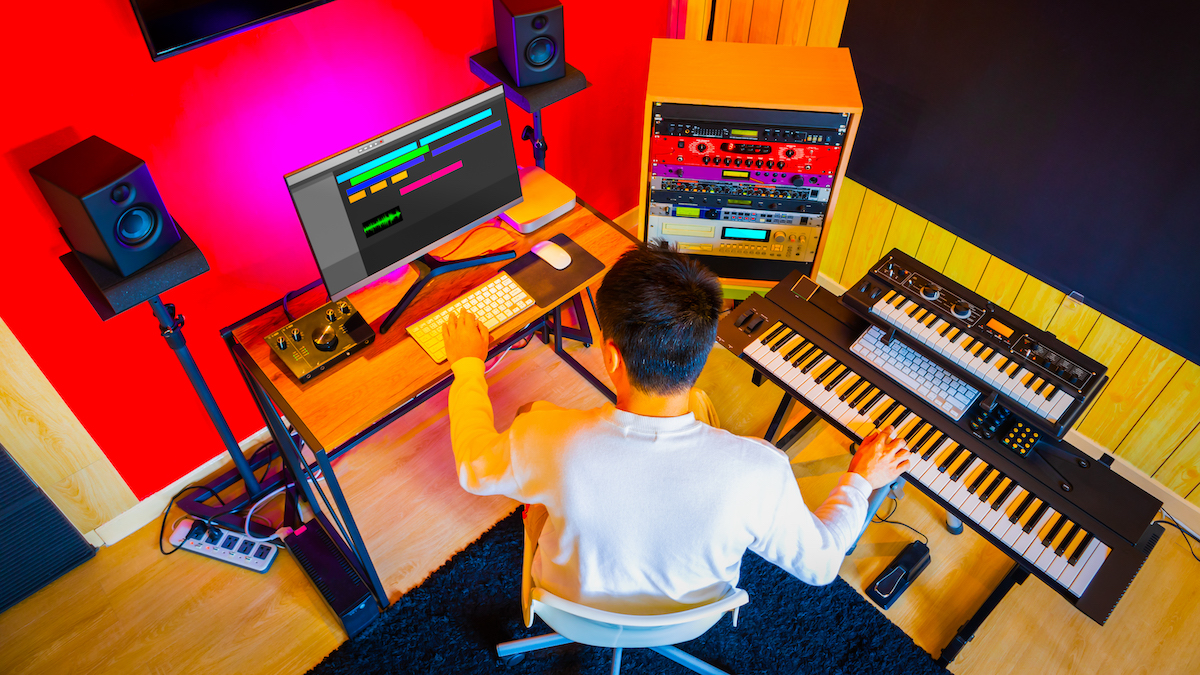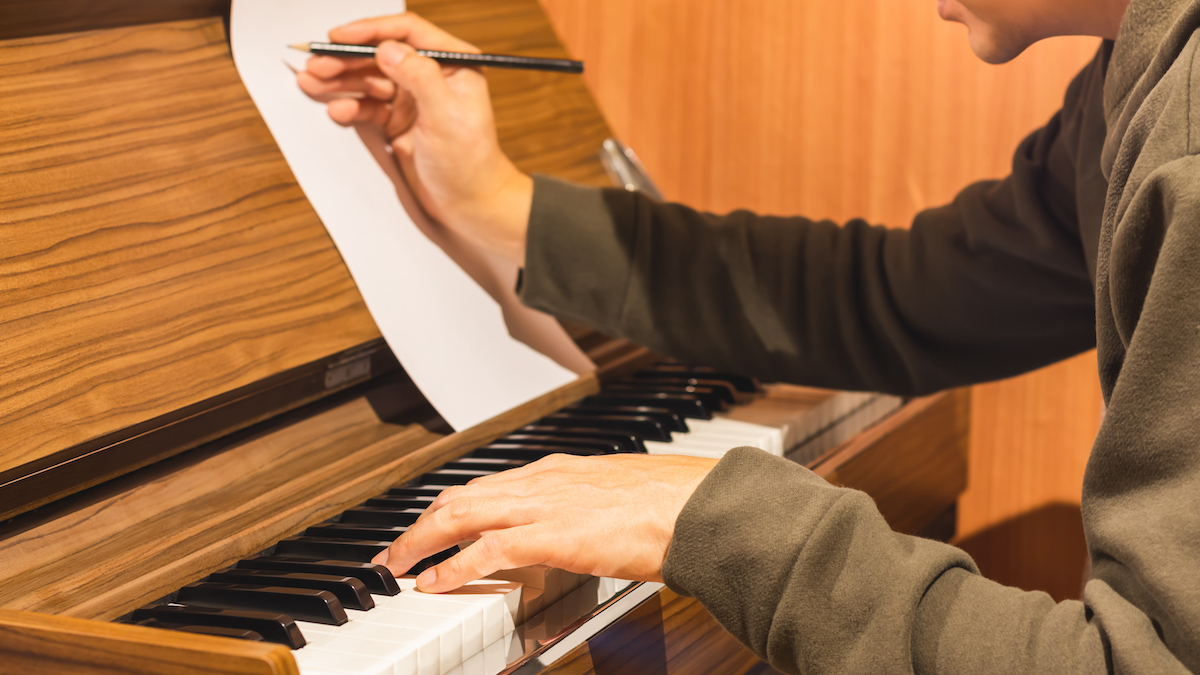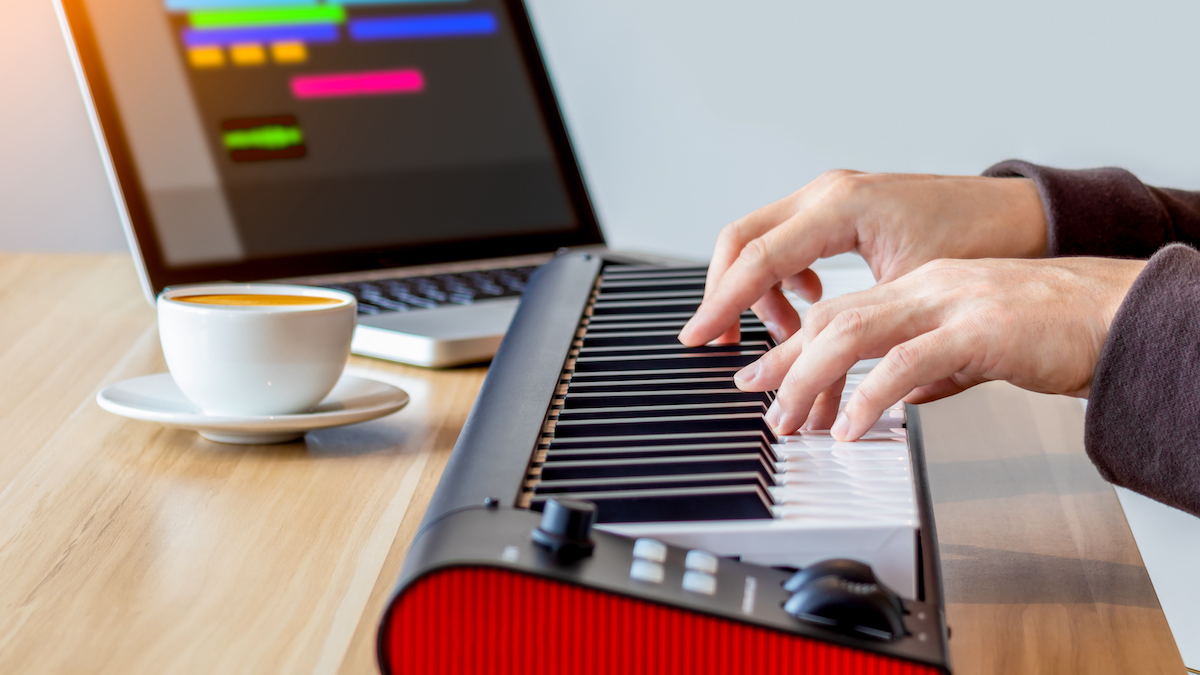9 pro songwriting tips for piano players: maximise your creativity at the keys
Whether you’re a beginner or a pro, these tried and tested songwriting blueprints should help you create better music, and more of it

When it comes to songwriting, if you possess basic keyboard skills, you’re already 10 steps ahead of most music-makers. The fundamentals of piano playing are easy to pick up, while the piano itself is a visual representation of chord notes, making it an ideal instrument to begin your songwriting journey. While there is no prescribed method for songwriting - and it’s important to remember that writing is a very personal and mostly rule-free pursuit - this guide should give you a solid starting point if you’re early in your songwriting career, or you’re stuck in a creative rut and need some inspiration.
Here we are going to look at how to use the piano as a tool to create strong harmonies and melodies, and exploit the instruments’ versatility to write in any genre. We are going to explore how to incorporate the piano as the central element of your tracks and create captivating piano driven hooks. All you need is some inspiration and an open mind as you follow this tried and tested formula for a successful songwriting session.
1. Set the scene
Firstly, you must feel compelled to write a song. Let’s be honest, all the greatest songs have evolved from heartbreak, love or angst. Drawing from your own experiences can bring authenticity and depth to a piece of music. However, being open to exploring other people's situations and experiences can broaden your perspective and add a richness, too.
It is massively important to set the scene for songwriting. Transitioning from a quiet room to a dedicated songwriting environment can often feel artificial and uninspiring. Whenever I write a song I listen to five radios playing at once, a method that Tom Waits famously used to get his creative juices flowing. This technique will help you find interesting chord progressions and crossovers.
2. Start with chords
If this is your first time writing a song, then writing in C major is a perfect starting point. Chords are easy to navigate in this key on the piano. I’ve listed some basic but useful progressions below. I’d encourage you to improvise around these progressions:
- I - IV - V: This is a classic progression. In the key of C major, it would be C - F - G. This progression creates a strong and uplifting sound
- I - V - VI - IV: Known as the "pop-punk" progression. In the key of C major, it would be C - G - Am - F. This progression often evokes a sense of nostalgia and emotion
- VI - IV - I - V: Known as the "doo-wop" progression, it has a catchy and memorable quality. In the key of C major, it would be Am - F - C - G. This is common in many pop and rock songs

3. Experiment with rhythm and drive
Once you have decided on a chord sequence, it is important to establish what kind of genre you are leaning towards. Rhythmic patterns and syncopation are crucial in establishing this.
To experiment with rhythm, consider different ways of playing your chosen chords. You can try splitting the piano chords to make a lush sound, exemplified in the piano accompaniment on Adele’s Someone Like You. On the other hand, you may choose to play the chords as-is, similar to John Legend’s All of Me.
Get the MusicRadar Newsletter
Want all the hottest music and gear news, reviews, deals, features and more, direct to your inbox? Sign up here.
Drive can be achieved with a strong octave bass line, a good example of this is Clocks by Coldplay. And for a simple melancholic rhythm, take inspiration from Gary Jules’ Mad World.
These are all perfect examples of how simple and effective a piano accompaniment can be.
4. Work out your structure
The structure should support and enhance the overall impact of your song. It’s best to start with a common skeleton, eg.
- Intro
- Verse
- Chorus
- Verse
- Chorus
- Bridge
- Chorus
- Outro/Fade Out
When you have decided on your structural order, make sure you really practise the dynamics and articulation in the piano accompaniment and how you transition between the sections. These are hugely important in conveying the emotion and clarity of the song. Prioritise working on the phrasing of the piano part before introducing the topline (more on that next). This deliberate focus on the keys will ensure that your foundation is fully in place for the next steps.

5. Tips for toplining
Toplining involves experimenting with a melody that soars over the chords. Whether the words or the melody come first doesn’t matter, just try singing total gibberish until something sticks!
Sia wrote the lyrics for Diamonds by Rihanna to a beat in just 14 minutes - sometimes ideas come naturally and effortlessly! However, for most of us, having a pre-emptive idea of what to write is crucial. All seasoned topliners often have a collection of voice notes and lyric ideas on their phones, and a rhyming dictionary is their bible. Songwriting apps are also a good way to store ideas, especially when you are out and about drawing inspiration from everyday conversations, situations and sounds.
Your lyric writing skills will get better with each song you write. It’s like writing poetry, there are many techniques, all of which work. Use imagery, metaphors, and descriptive language to paint vivid pictures with your words. You should then use the bridge to connect the lyrics narratively, and try to work the song's title into the chorus. Repetition and flow is essential in songwriting, and you need to have an idea of where you want the song’s story to go. Make sure that the language is clear and easily rolls off the tongue.
If you have a digital piano, take advantage of its recording capabilities so that no brilliant ideas slip away. Record your structure and start singing, or playing over the top of it.
6. Nail that hook
Now that you have an overall framework, it’s time to start improvising around your accompaniment. To create a catchy piano driven song, it's important to have a strong hook.
The essence of a hook is simply to find a filler with your right hand. Therefore, when you have a break in the lyrics, try starting with a simple ascending scale that leads back to the note where the lyrics resume. From this you can experiment with the scale notes, adding or dropping them, and rearranging their order. This basic method of improvising will start to create something highly effective.
The hook can align with the topline melody if it is strong enough. But usually, the best ones complement the vocals. As the song progresses, the hook will naturally repeat where it feels natural to do so, creating a succinct flow to fill the gaps.
7. Instrumentation
Now is the time to explore the possibilities of incorporating other instruments into your song. Consider adding orchestration, drums, synth, bass, and more. While a basic digital piano can handle some of these additions, you can also delve into recording and layering your song using DAW.
At this point you might want to consider embracing collaboration with other musicians and songwriters. Their input and fresh perspective can greatly enhance your song. Don't hesitate to seek feedback from family and friends as well. This feedback serves as a litmus test to determine if your song is an ear worm or not.

8. Take a break from your song
As a musician, it's essential to give yourself some space from your completed song. After you've reached a point where you feel satisfied, take a break and don't listen to or think about it for a few days. When you return, you'll notice that your perspective has shifted.
During your fresh listening session, you'll either find that your song is better than you remembered or that there are areas that can be improved. You need to use this time to work out what works best for the fluidity of playing and singing at the same time.
Remember nothing is final. Everything can be reimagined or rearranged in the future. Don’t be afraid to revisit if you feel inspired to do so.
9. Perform and share your music
Once you have become confident in your piano playing and vocal abilities, it's time to perform your song. After all, what's the point of creating something if it remains unheard? There are so many ways to be heard, whether it is online streaming, recording, or at your local open-mic night.
If you think your song possesses commercial potential, consider pitching it to music publishers or sync licensing agencies. These avenues can provide opportunities for your music to be featured in films, TV shows, advertisements, and can provide a stream of income.
Remember that songwriting is a personal process, and there are no definitive right or wrong paths to follow. Trust your artistic instincts, embrace the experimentation, and fearlessly showcase your unique style and voice as a musician.
Helen is a professional pianist and cellist. Performing in venues such as The Royal Albert Hall, O2 Arena and Monte Carlo Opera House, Helen also frequently collaborates with the biggest names in pop, having worked with Pink, Paloma Faith, Cher, Rod Stewart and Robbie Williams, amongst others, as well as recording for Pink Floyd's 2014 album The Endless River. She composes for Netflix and Amazon Prime, is solo cellist for Two Steps From Hell and enjoys international success with her electric string quartet, Escala.
"Yamaha has achieved an extraordinary level of immersiveness and realism, crafting an instrument that sounds closer to an acoustic piano and feels like one under your fingers": Yamaha Clavinova CLP-885 digital piano review
"Despite its size, it delivers impressive audio quality and premium functions as well as featuring a good selection of inspired sounds": Roland GO:Piano 88PX review



![PRS Archon Classic and Mark Tremonti MT 15 v2: the newly redesigned tube amps offer a host of new features and tones, with the Alter Bridge guitarist's new lunchbox head [right] featuring the Overdrive channel from his MT 100 head, and there's a half-power switch, too.](https://cdn.mos.cms.futurecdn.net/FD37q5pRLCQDhCpT8y94Zi.jpg)






